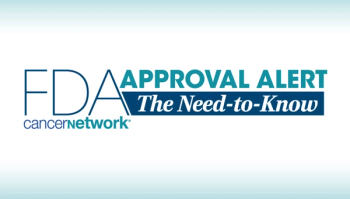
Oncology NEWS International
- Oncology NEWS International Vol 10 No 5
- Volume 10
- Issue 5
Colorectal Cancer Screening Rates Still Low: CDC Study Finds
WASHINGTON-Colorectal cancer screening rates have risen slightly since 1997 but remain at low levels, according to a report by the Centers for Disease Control and Prevention. The report compared data from the 1999 Behavioral Risk Factor Surveillance System (BRFSS)-a random-digit phone survey of residents of the United States and Puerto Rico-with findings from the 1997 BRFSS. Respondents over age 50 were asked about colorectal cancer screening.
WASHINGTONColorectal cancer screening rates have risen slightly since 1997 but remain at low levels, according to a report by the Centers for Disease Control and Prevention. The report compared data from the 1999 Behavioral Risk Factor Surveillance System (BRFSS)a random-digit phone survey of residents of the United States and Puerto Ricowith findings from the 1997 BRFSS. Respondents over age 50 were asked about colorectal cancer screening.
In 1999, 44% of the respondents reported receiving either a fecal occult blood test (FOBT) in the year before being surveyed and/or a sigmoidoscopy or colonoscopy exam within the previous 5 years, compared with 41% in 1997 who reported getting an FOBT and/or sigmoidoscopy or proctoscopy within the same time spans.
The highest FOBT use in the 1999 survey was in the District of Columbia (36.4%) and the lowest was in Puerto Rico (8.2%). For sigmoidoscopy/colon-oscopy, the high was 46.1% in Delaware and the low 20.4% in Puerto Rico.
Articles in this issue
over 24 years ago
Adjuvant Chemo Dose Reductions Frequent in Breast Cancerover 24 years ago
Women May Be at Greater Risk for Undertreatment of Cancer Painover 24 years ago
Umbilical Cord Blood in Adult Leukemia Patientsover 24 years ago
Irinotecan Results Continue to Be Encouraging in Colorectal Cancerover 24 years ago
Irinotecan Active in Pediatric Cancersover 24 years ago
Ultrasound Contrast Agents Help Diagnose Prostate Cancerover 24 years ago
Optimal Use of Irinotecan Still to be Determinedover 24 years ago
Groups Urge Federal Action Against Eclipse Cigarettesover 24 years ago
Potential Advantages of Oral Irinotecan Defined in Phase I StudiesNewsletter
Stay up to date on recent advances in the multidisciplinary approach to cancer.
















































































